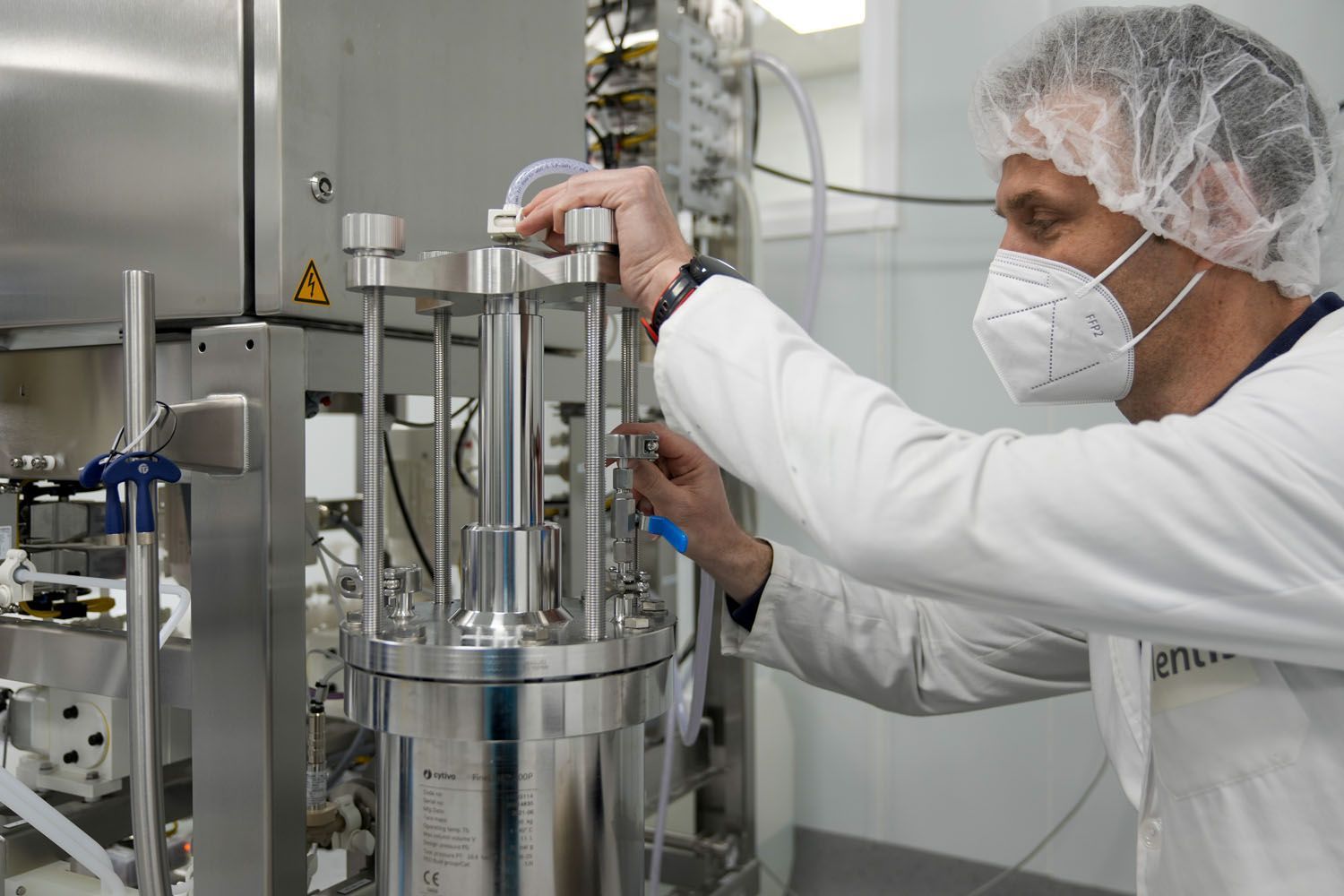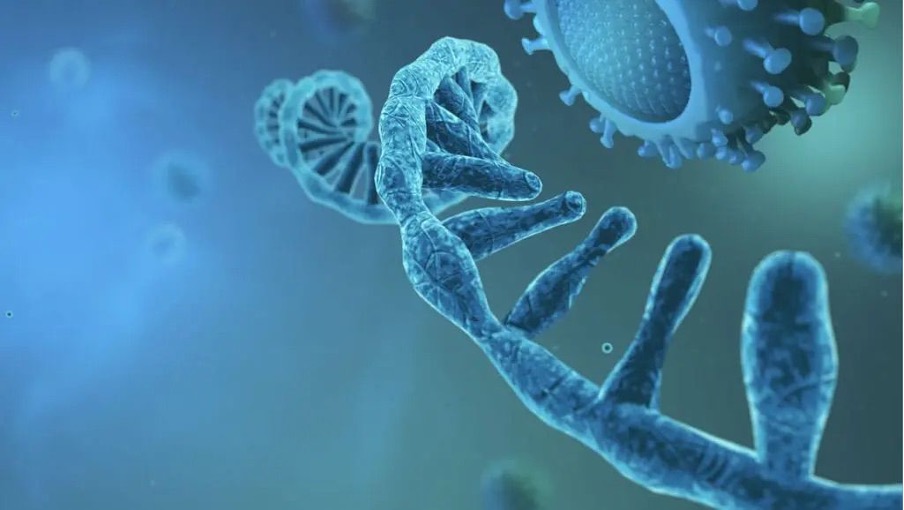In this sixth installment of our #DiscoveringOligonucleotides series, we delve into the synthesis and scale-up of therapeutic oligonucleotides. These small fragments of nucleic acids have proven to be crucial tools in the development of innovative and targeted drugs for a variety of medical conditions.
Ensuring excellence in the production of therapeutic oligonucleotides: synthesis, purification and lyophilisation
The synthesis of therapeutic oligonucleotides involves the construction of specific strands of nucleic acids (DNA or RNA) first on a laboratory scale. This highly specialised process uses chemical and biotechnological synthesis techniques to assemble the desired sequences with molecular precision. The choice of synthesis methodology, the quality of the reagents and the appropriate purification are critical factors that determine the efficacy and safety of the resulting oligonucleotides.
It is essential to highlight the importance of chemical modification during synthesis to improve the stability and bioavailability of oligonucleotides. These modifications optimise resistance to degradative enzymes present in the body and improve treatment efficacy. Ongoing research in this area seeks more efficient methods and improvements in deliverability to maximise therapeutic impact.
Purification, through methods such as high-performance chromatography, is an essential step in separating the desired oligonucleotides from contaminants, thus ensuring a pure and efficient final product.
Finally, freeze-drying, by freeze-drying, preserves the structure and activity of the oligonucleotides, providing long-term stability and facilitating storage and transport. Together, these meticulously executed steps form a crucial triumvirate that ensures that oligonucleotide-based treatments are safe, pure and ready to effectively address the complexities of diseases, especially those considered rare.

Scaling up production: from research to clinical application
Production scale-up is a critical phase that takes oligonucleotides from small-quantity synthesis, used in pre-clinical research, to the large-scale production needed for clinical trials and treatments. This process is not only a technical challenge, but also a logistical and economic challenge.
Successful transition from laboratory to large-scale production involves optimising processes, improving yields and ensuring consistent quality assurance. Researchers face challenges such as supply chain management, selection of suitable production platforms and standardisation of procedures to ensure consistency and efficiency.
These often rare and complex conditions present unique challenges for research and the development of effective treatments. Therapeutic oligonucleotides offer a hopeful avenue by enabling highly specific and personalised approaches to address the underlying causes of these diseases.
The ability to efficiently synthesise and scale-up therapeutic oligonucleotides is a crucial step towards the possibility of developing targeted and tailored treatments for patients with rare diseases. By overcoming technical and logistical barriers, we open the door to hope for those facing diseases with limited treatment options.
Ensuring quality and safety: Good Manufacturing Practices
The application of Good Manufacturing Practices (GMP) is essential in the production of therapeutic oligonucleotides, ensuring the quality, safety and efficacy of these products for clinical applications. From chemical synthesis to lyophilisation, GMP imposes a comprehensive approach to quality control, requiring documentation and verification at every stage to ensure product integrity.
Rigorous standards are established in the process for the identification and traceability of materials, ensuring the quality of the inputs used. Facilities, equipment and personnel must meet strict standards, including continuous training of staff to keep up to date on practices and procedures, ensuring the reliability and quality of treatments, marking an unwavering commitment to improving the health of patients.

Innovative strategies for a personalised future
New oligonucleotide synthesis strategies mark a milestone in efficiency and precision, transforming the production of these key molecular elements. Among the innovations highlighted, Solid Phase Synthesis (SPS) has enabled faster and more efficient synthesis, automating the process by building oligonucleotides on solid supports. Advanced coupling strategies, such as oxime coupling and click chemistry, improve the speed and purity of chemical synthesis.
More efficient deprotection agents reduce times and improve product purity, while advanced chemical and analytical modification strategies, such as high-resolution mass spectrometry, improve oligonucleotide stability. Enzymatic synthesis, microarray and parallel synthesis technologies, as well as photon-assisted methods such as photolithography, offer promising alternative approaches.
These innovations, when combined, accelerate the research and development of personalised treatments, paving the way for more effective and accessible clinical applications in the field of oligonucleotide therapeutics.
In summary, the synthesis and scale-up of therapeutic oligonucleotides not only represents technological advances in medical research, but also takes on transcendental importance for those affected by rare diseases.
The OLIGOFASTX commitment not only accelerates the availability of therapies for patients with rare diseases, but also sets a standard for interdisciplinary collaboration and innovation, leading the way to a more hopeful future for those facing rare medical conditions.
Sources:
Oligonucleotide synthesis | Challenges and solutions
SYNTHESIS OF NUCLEOSIDES AND OLIGONUCLEOTIDES WITH POTENTIAL PHARMACOLOGICAL ACTIVITY
Synthesis of nucleosides and oligonucleotides with potential pharmacological activity – Dialnet
Production scale-up and biosynthesis – Oligofastx
What are ‘click chemistry’ and ‘bioorthogonal chemistry’ and what are they for?
What is GMP regulation? Meaning and regulation

 Español
Español
